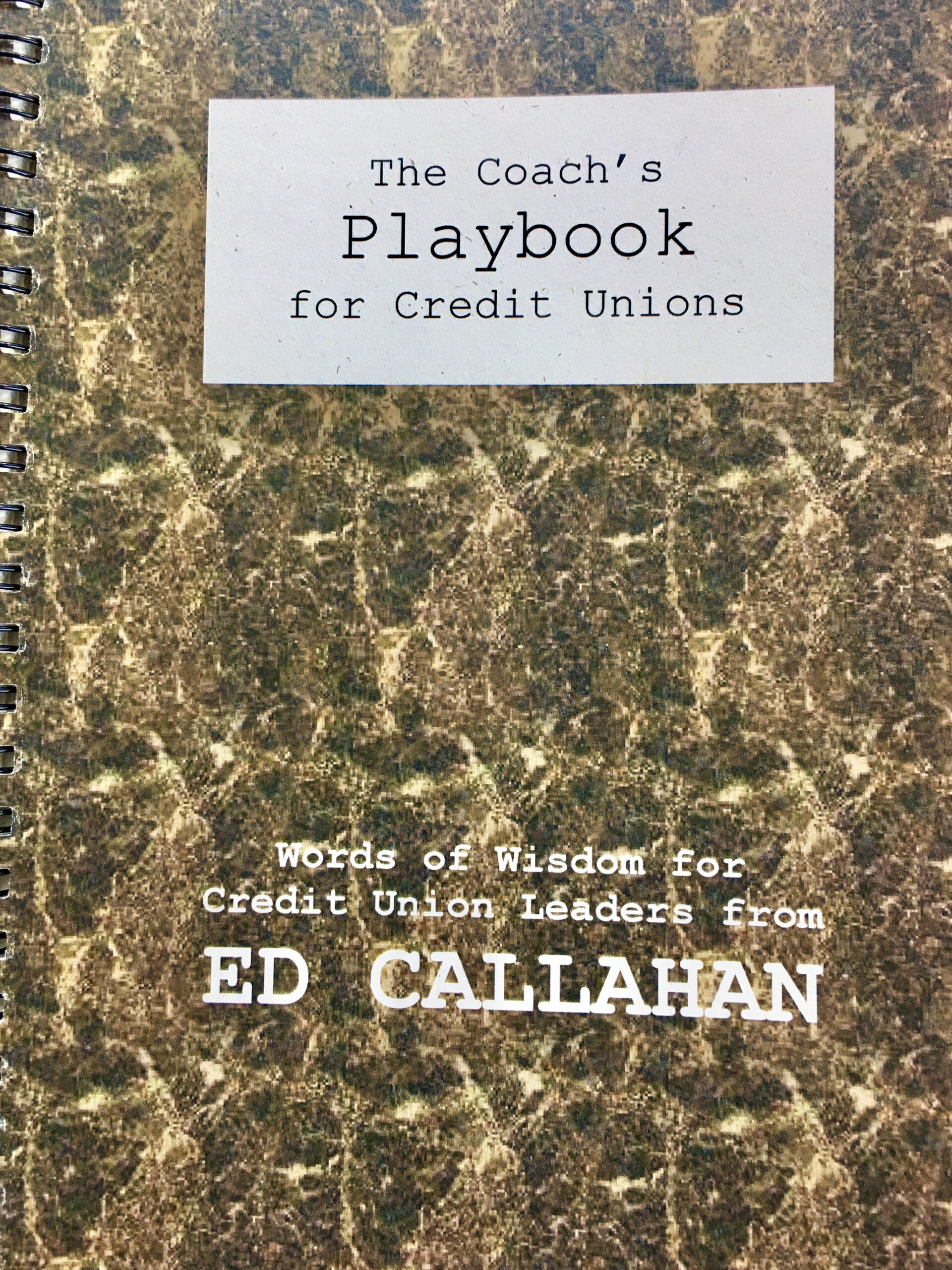On Running Lean
“I started my career as a football coach. Something you learn from coaching is that people can do more than they think they can. They can be faster, work harder and do more than they thought possible when they got up in the morning.
“When I arrived at Patelco, I reviewed the numbers. The credit union was sending 10% of income to reserves and returning 4-5% to members as dividends. Patelco was bloated and did not know it.
“I set a new goal: 10% to reserves 28% to expenses and 62% back to the members, To get that 10-28-62, everyone had to work leaner and better. Nothing was considered sacred.” (pgs 22-23)
Note: The Coach’s Playbook is a brief collection of the thoughts of Ed Callahan over his 30 plus years in credit unions. The book was published in 2006 by the Member Value Network.


From Brian Fogg, CEO, Credit Union of Vermont:
Good Monday morning,
Ok, I read this and yes it is thought provoking. I realize it goes back some years, but I ran my numbers and as I review them, I offer the following comments:
1. What was Patelco’s asset growth rate and net worth at the time this pricing strategy was implemented? Without that information one can not assert this was a sound financial strategy.
2. 62% back to members as dividend? Ok, but what about the other side of the ledger – the borrowing members? If loans are over priced, you are taking away the value offered those members in order to transfer more to the saving members.
As of 9/30/2023 I have a 1.74 operating expense ratio. That is in a $75 million asset credit union with 6 full time employees, a 13.03% net worth and 6.28% YTD growth rate. I pay my staff on the higher side (and want to pay them more) but I get good productivity and have little staff turn over. I also have a much higher cost of funds than other financial institutions. I ran my numbers with the following results as a percentage of Operating Income:
Reserves: 46%
Operating Expenses: 34%
Cost of Funds: 20%
Now, I acknowledge that we are highly capitalized. But strong net worth brings future income and stability to results. By reducing my net income such that it is 10% of operating income, I could increase my COF to 57% of OI. That would certainly make saving members happy which would in turn likely increase our asset growth. Oops, just like that I need more net income to maintain our net worth.
I applaud the author for being critical of Patelco’s bloated state and for implementing a worthy goal to correct it, but it certainly is not applicable in all cases. That of course is not what the author was implying anyway.
Kudos to the critical & independent thinkers in credit union land.
I’ve got to get back to work!